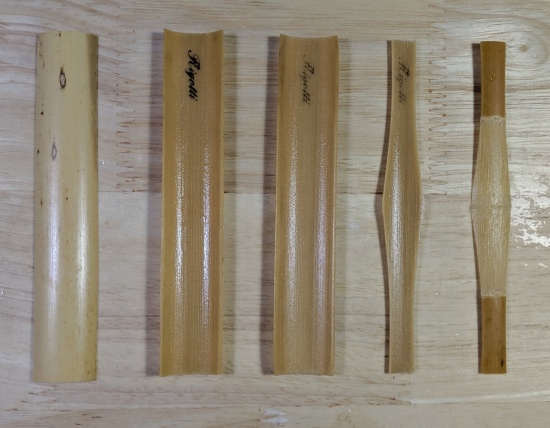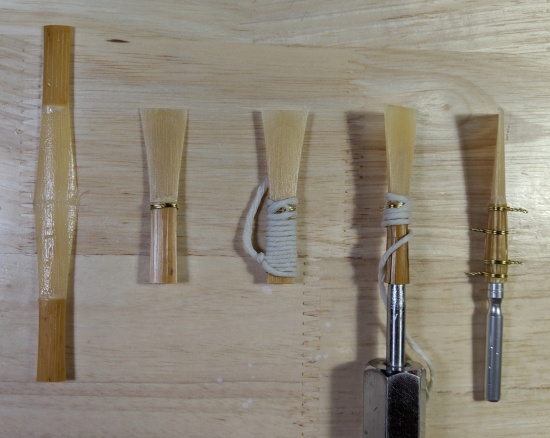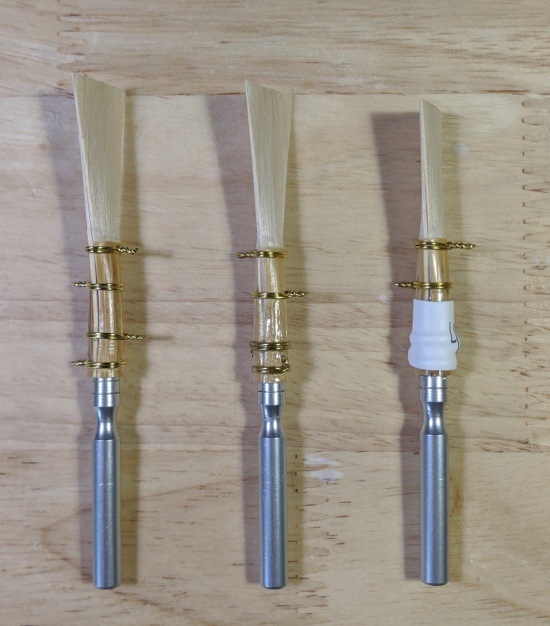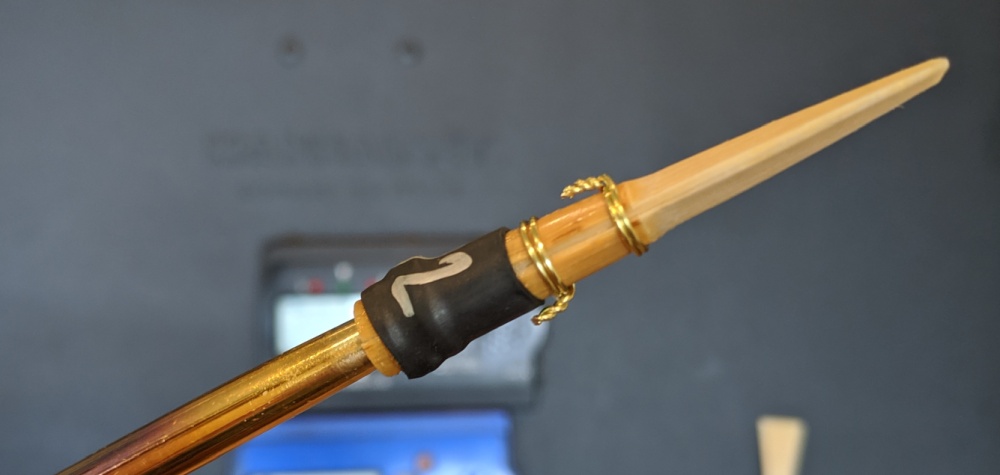How I Make My Reeds 2019
I start with gouged cane. I don't own a gouger so at least for the moment gouging my own isn't an option. I understand the usefulness of being able to control the gouge yourself, but buying gouged saves a bit of time, though it's also more expensive. I use Rigotti cane and have for years, the main reason being that it's cheap. For the price of five pieces of most brands, I can get 8-10 pieces of gouged cane. Rigotti is by no means the most consistent or even the best cane I've used, but I've been using it long enough that I know generally how much it varies and what to do to compensate for that. For those who don't know, Rigotti is 120mm long pieces with an eccentric gouge. I try to buy 2-3 times the amount I use in a year each year now so that I can play on more aged cane than what usually ships - it seems that many people with access to cane that is aged extra (10+ years) report better results, so I figured I would get a start on building up an aged supply and right now am playing on cane purchased at the end of 2016.
/*
back to top */






